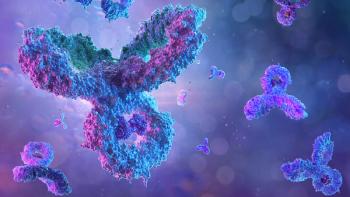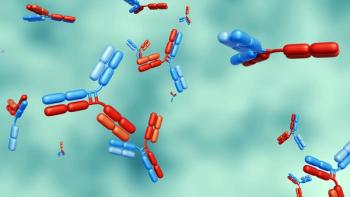
- BioPharm International-10-01-2012
- Volume 25
- Issue 10
Discovery Pipeline: Nanoparticles for Targeted Delivery
Recently published research demonstrates how nanoparticles can be used to overcome hurdles in localized drug delivery.
Recently published research demonstrates how nanoparticles can be used to overcome hurdles in localized drug delivery. Researchers from Johns Hopkins University designed nanoparticles that could be used to deliver drugs locally in the brain, which may help overcome issues of access and toxicity when administering chemotherapeutics directly to the brain after surgical removal of tumors (1). Generally, particles larger than 64 nm do not freely diffuse through the extracellular space in the brain. To overcome the barrier to diffusion, researchers coated plastic nanoparticles with polyethelyne glycol (PEG) to reduce surface adhesiveness. When applied to slices of rat or human brain, the PEG-coated nanoparticles diffused farther than untreated particles, and diffusion of particles as large as 114 nm was observed. In mouse brain in vivo, the authors demonstrated diffusion of 85 nm, biodegradable, PEG-coated particles loaded with the anticancer agent paxlitaxol.
Researchers from the University of Georgia used an FDA-approved biodegradable polymer to create nanoparticles targeted to the mitochondria (2). Dysfunctional mitochondria have been implicated in conditions including cancer, metabolic disorders, and neurodegeneration, but targeting a therapeutic to a subcellular organelle is difficult. To achieve selective targeting, the authors screened a library of particles with different sizes and charges to select those with optimal uptake into mitochondria, then administered drug-loaded particles to cultured cells. For the anticancer drug lonidamine, they found that mitochondrial targeting increased cell-killing by more than 100 times compared with the drug alone and by five times compared with nanoparticles targeting the outside of the cell. Both studies show how modifying nanoparticle physicochemical properties can solve specific problems in targeted delivery.
Sources:
1. Nance et al., Sci. Transl. Med. doi: 10.1126/scitranslmed.3003594 Aug. 29, 2012.
2. Marrache and Dhar, Proc. Natl. Acad. Sci. online, doi: 10.1073/pnas.1210096109, Sept. 18, 2012.
— Amy Ritter
Articles in this issue
about 13 years ago
BioPharm International, October 2012 Issue (PDF)about 13 years ago
India Enforces Stricter Patent Lawsabout 13 years ago
A Manufacturing-Capacity Sharing Modelabout 13 years ago
FDA and the Importance of Confidentialityabout 13 years ago
New Era for Generic Drugsabout 13 years ago
Considerations in Vaccine Packaging and Delivery Systemsabout 13 years ago
Sizing the Market for Contract Manufacturingabout 13 years ago
Bringing Innovation to Neglected Disease R&DNewsletter
Stay at the forefront of biopharmaceutical innovation—subscribe to BioPharm International for expert insights on drug development, manufacturing, compliance, and more.





